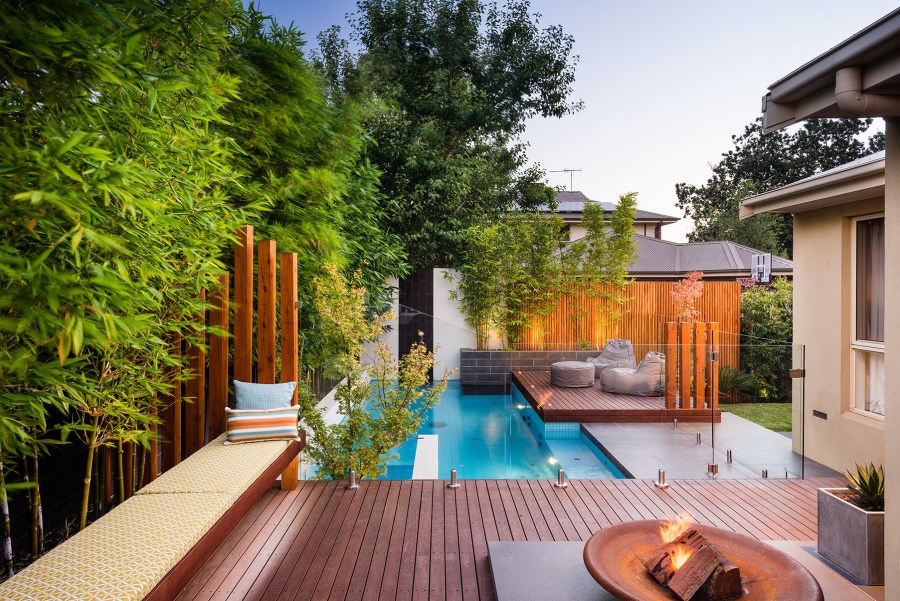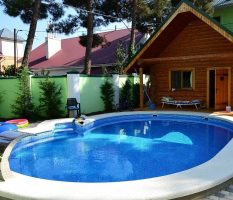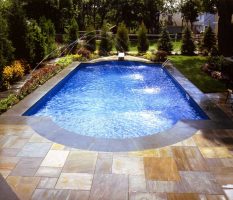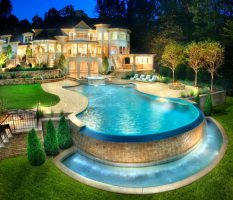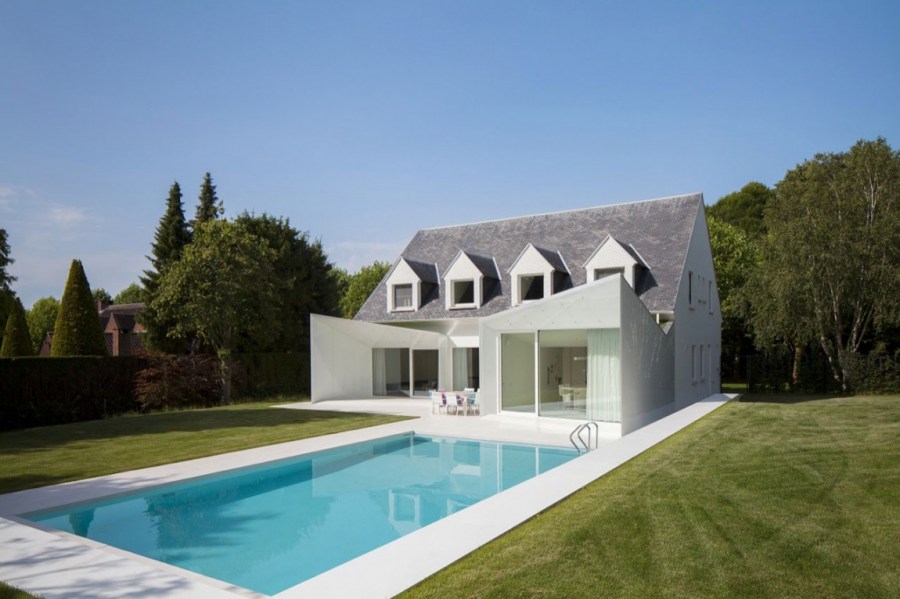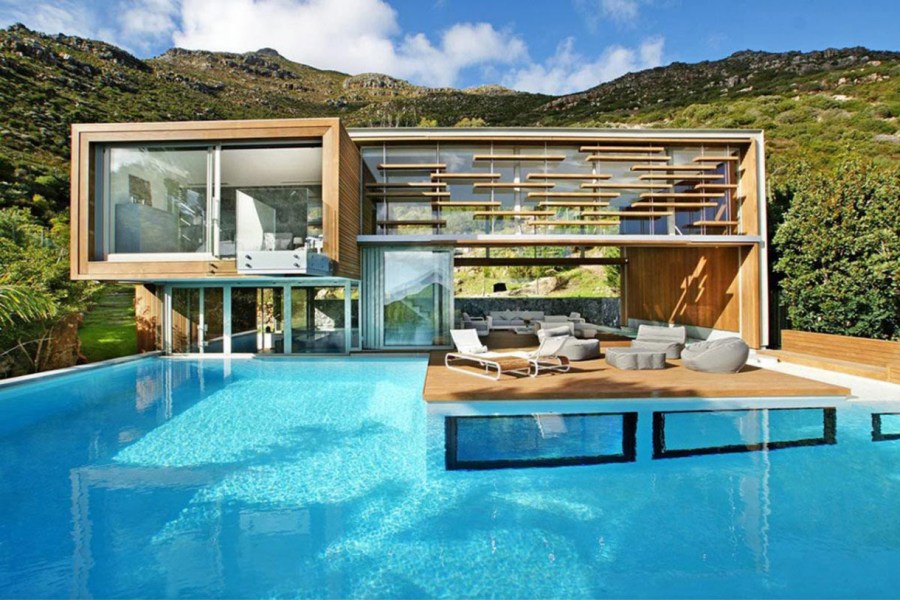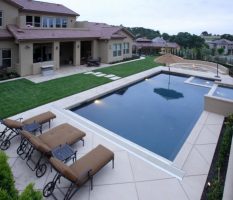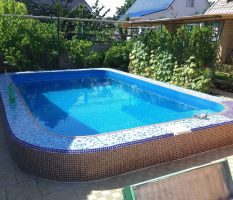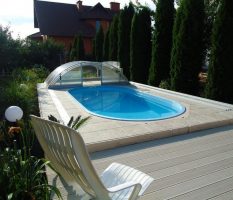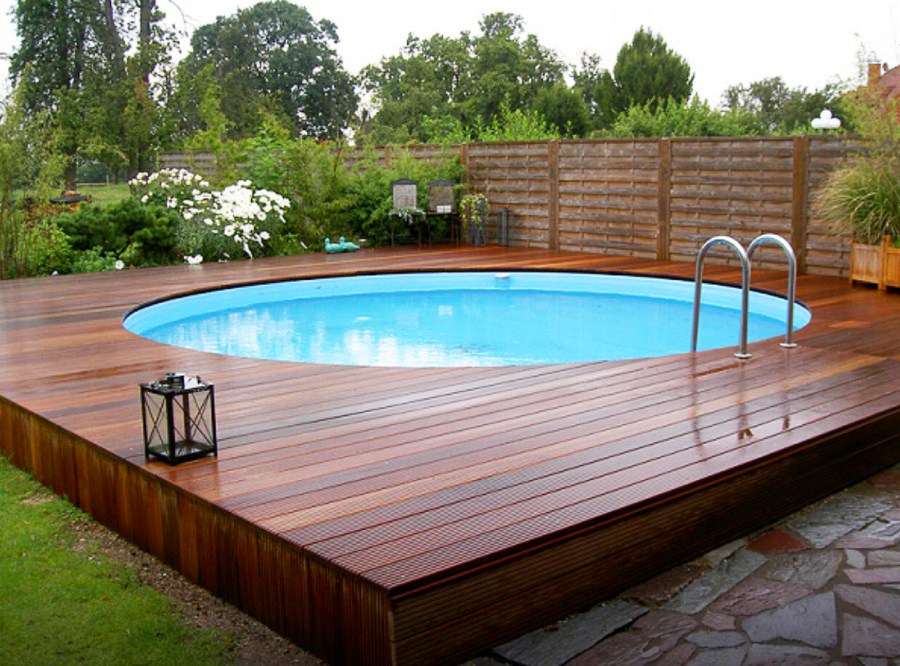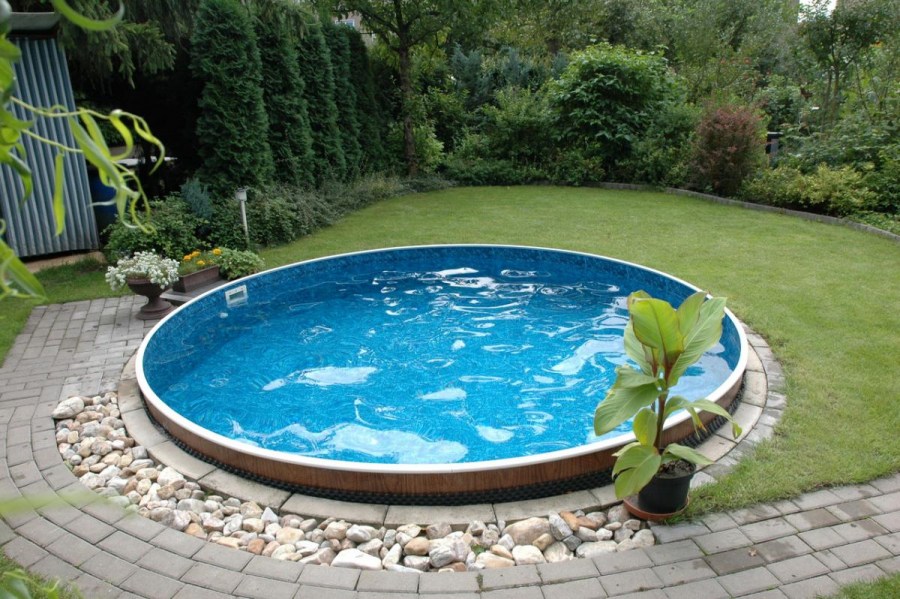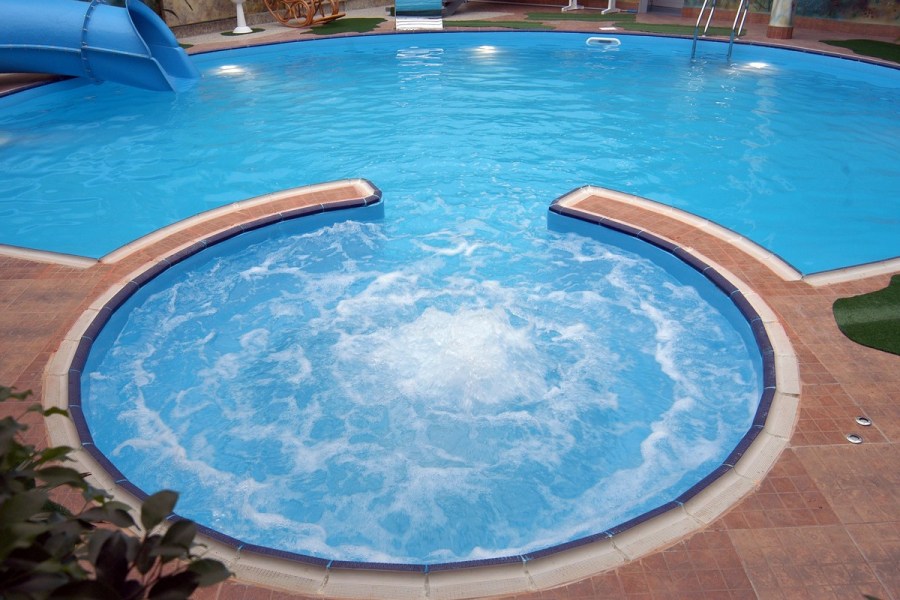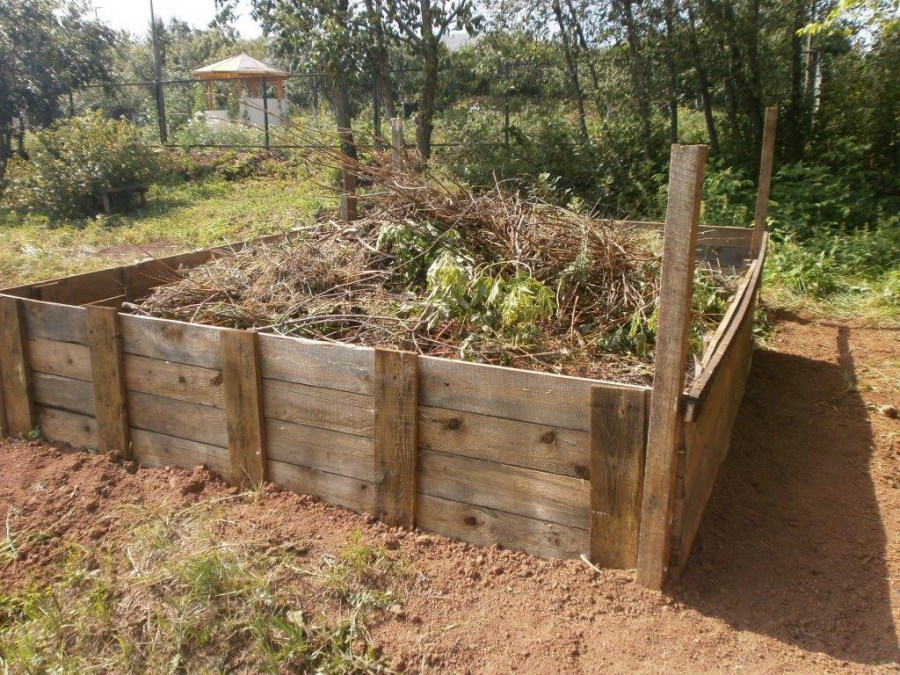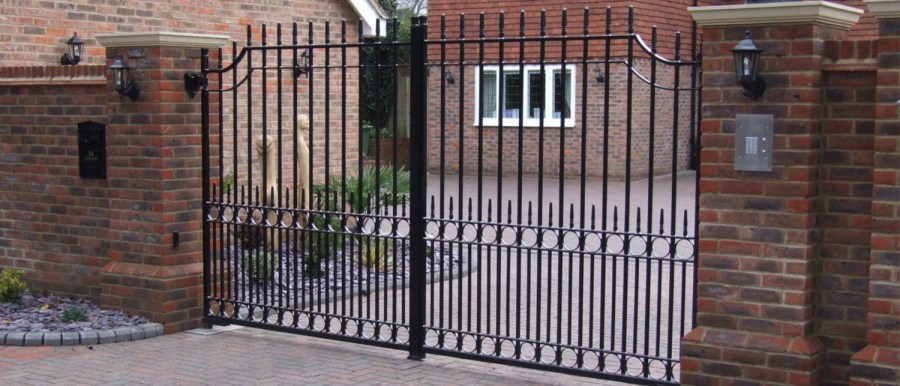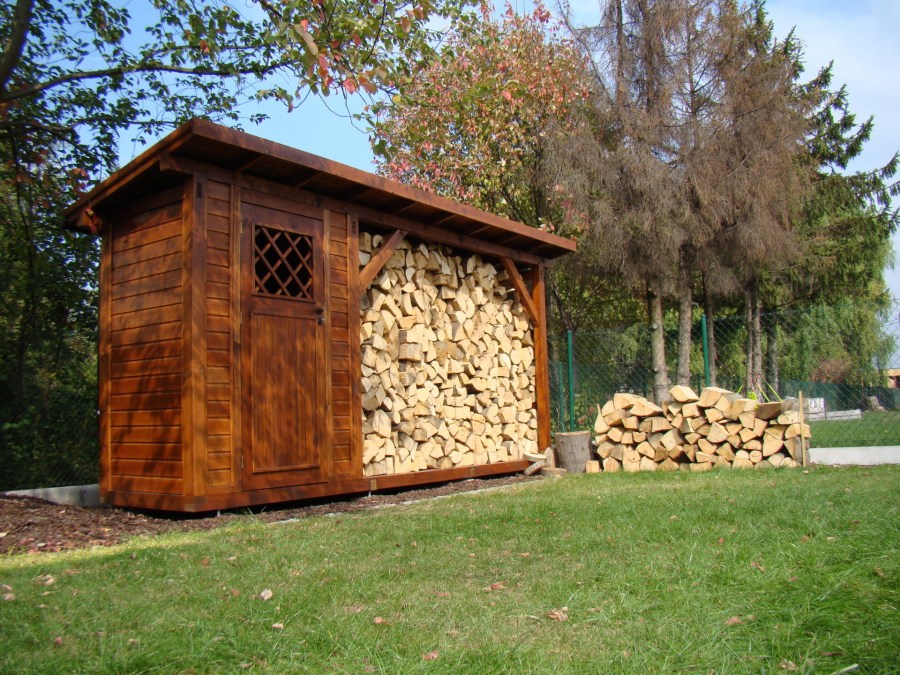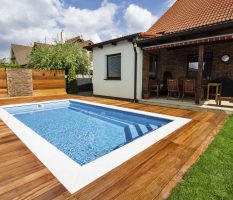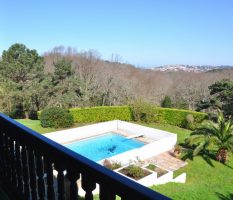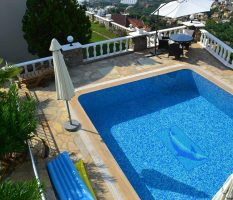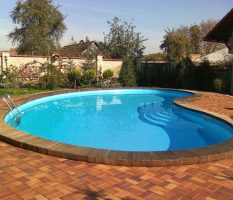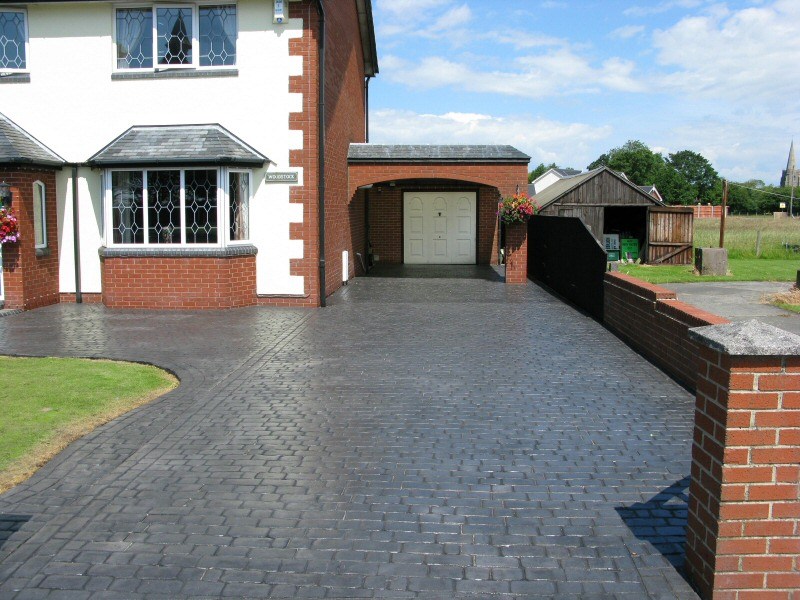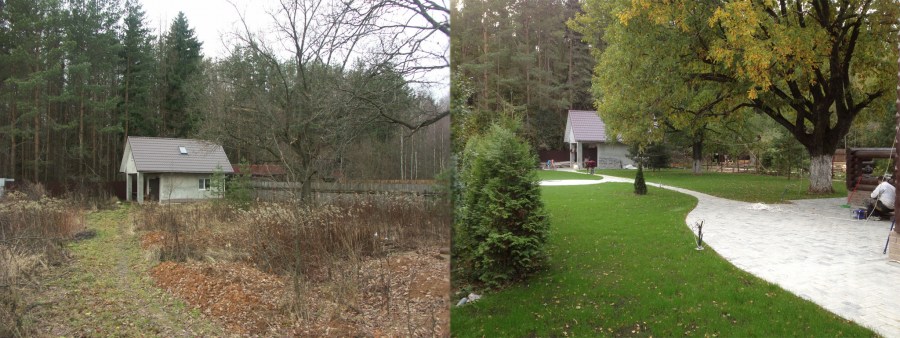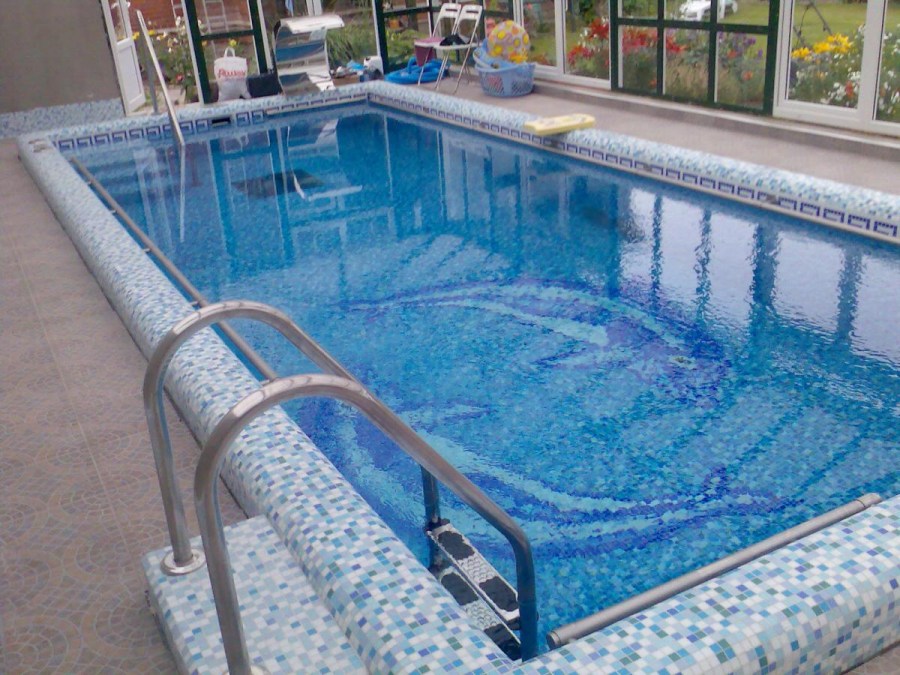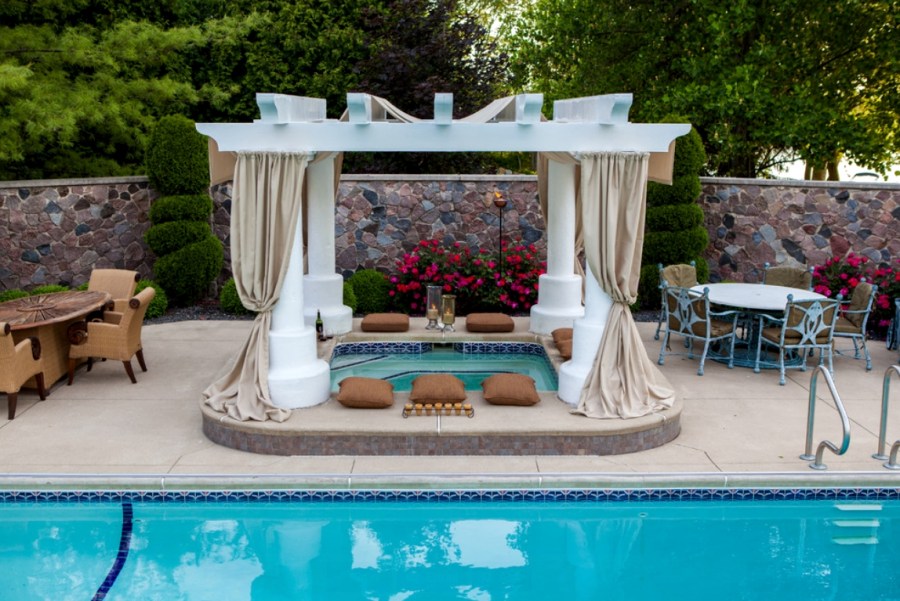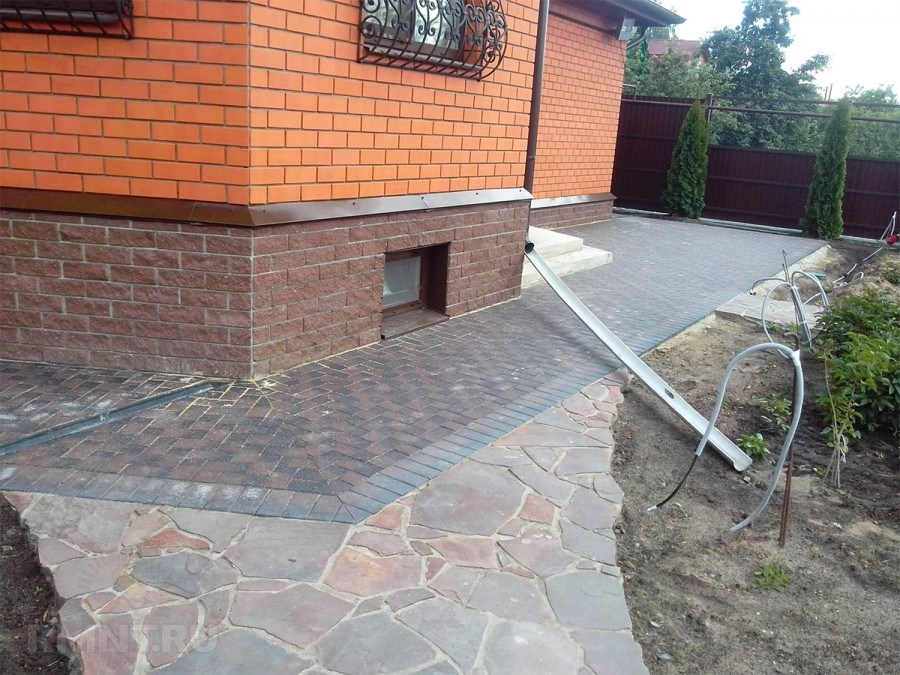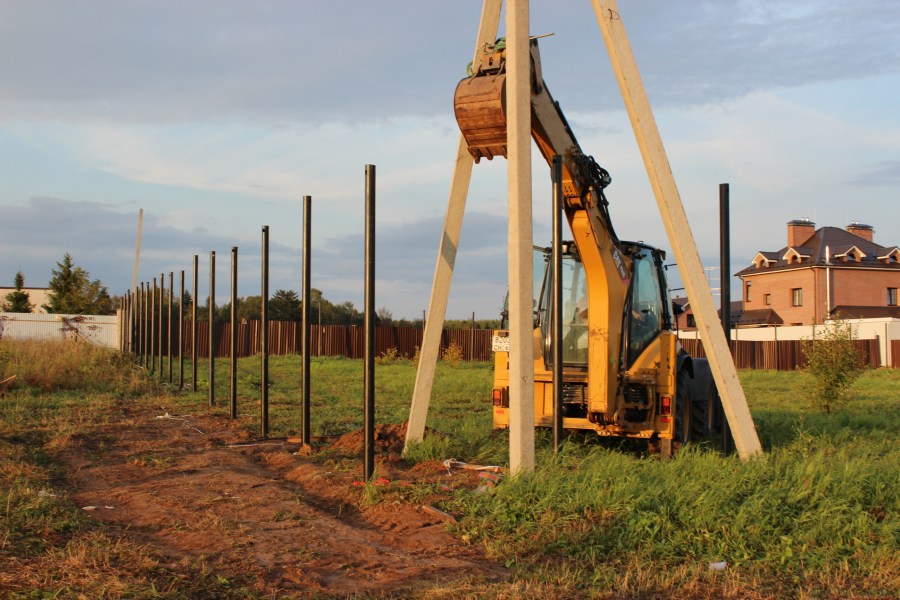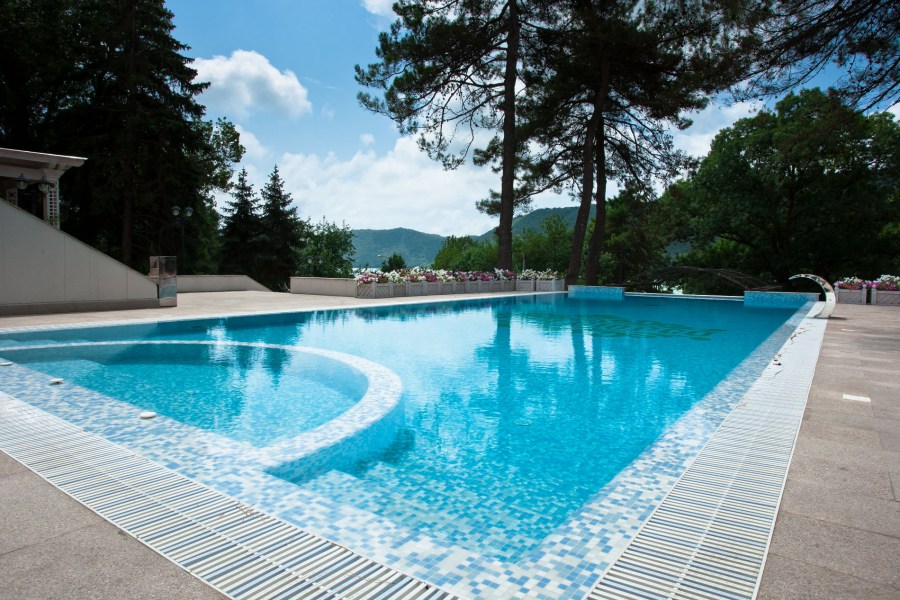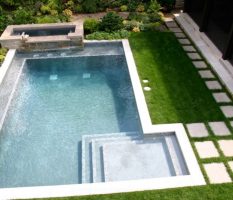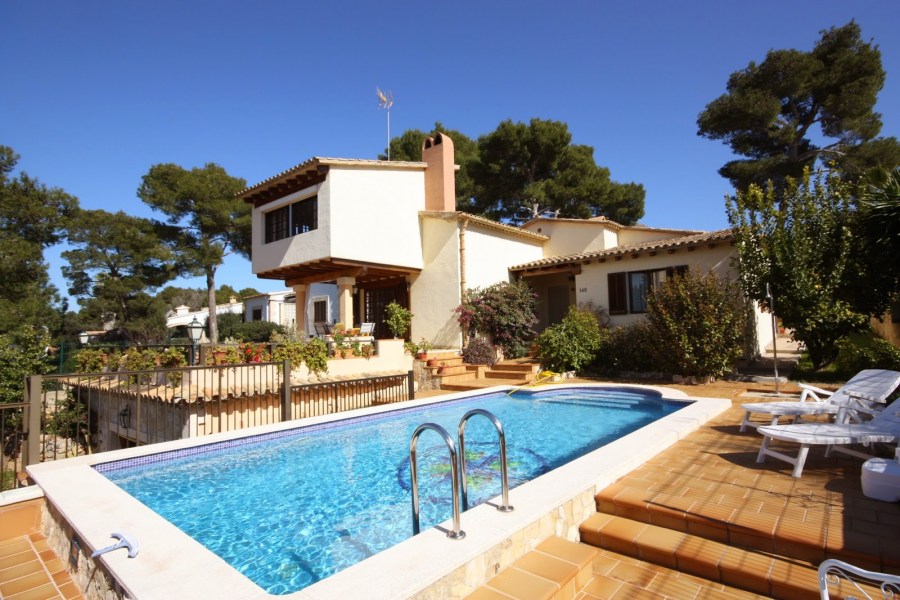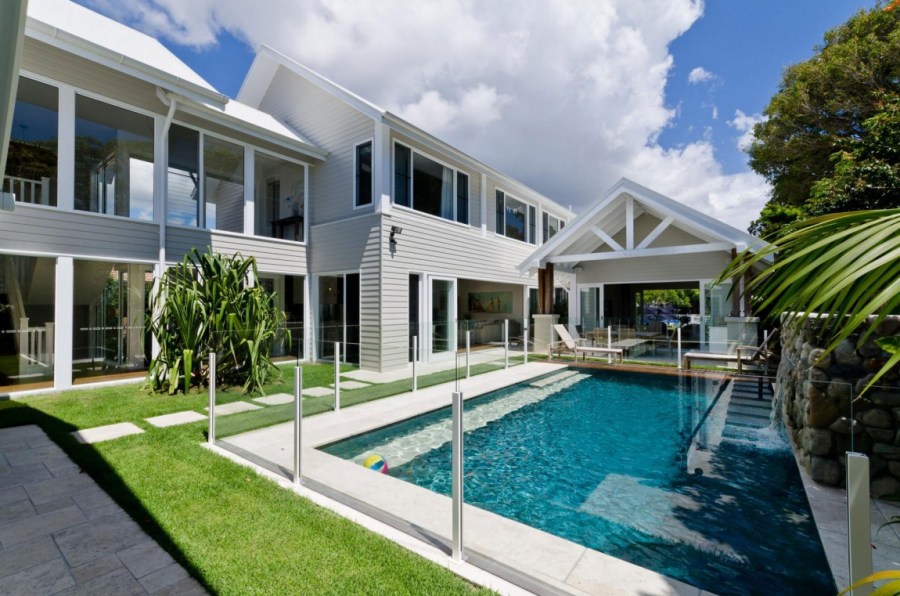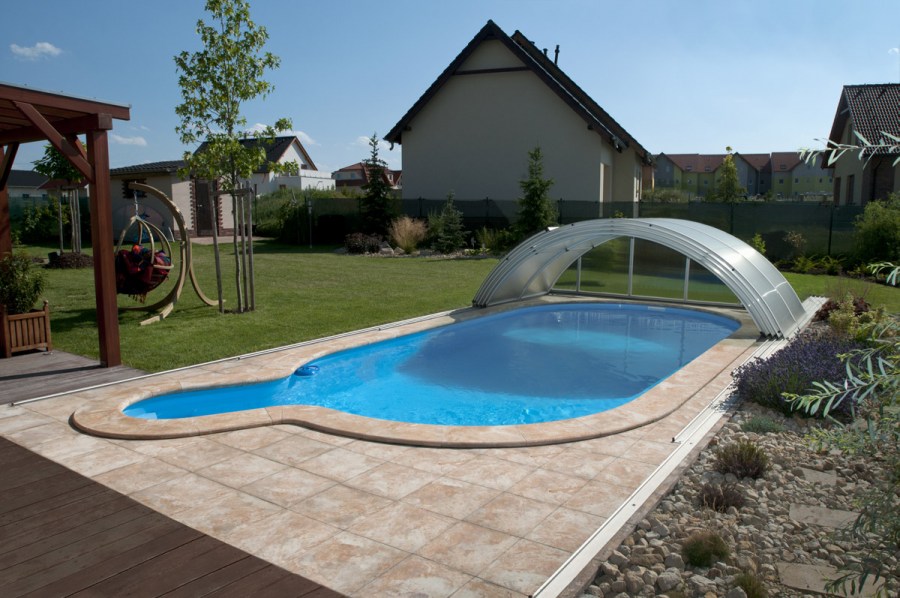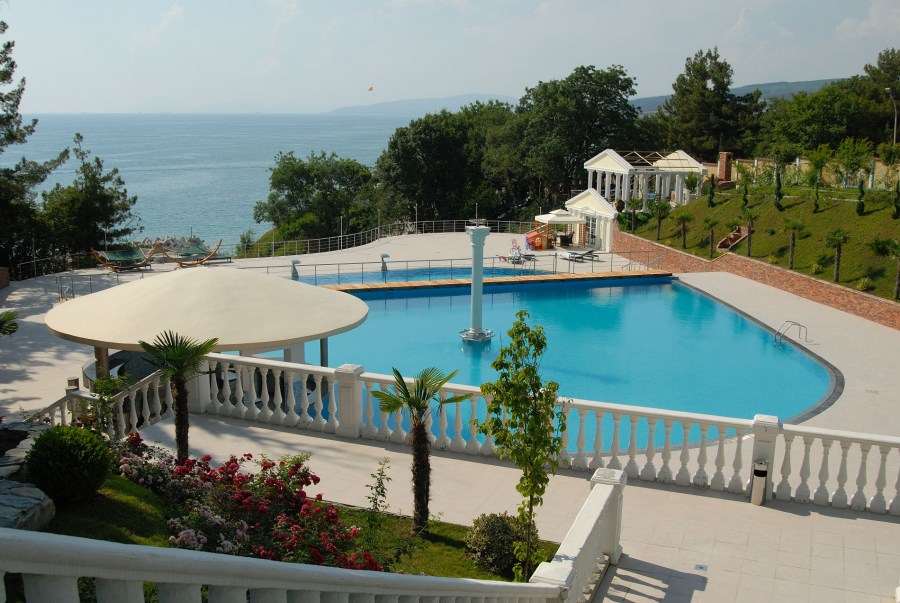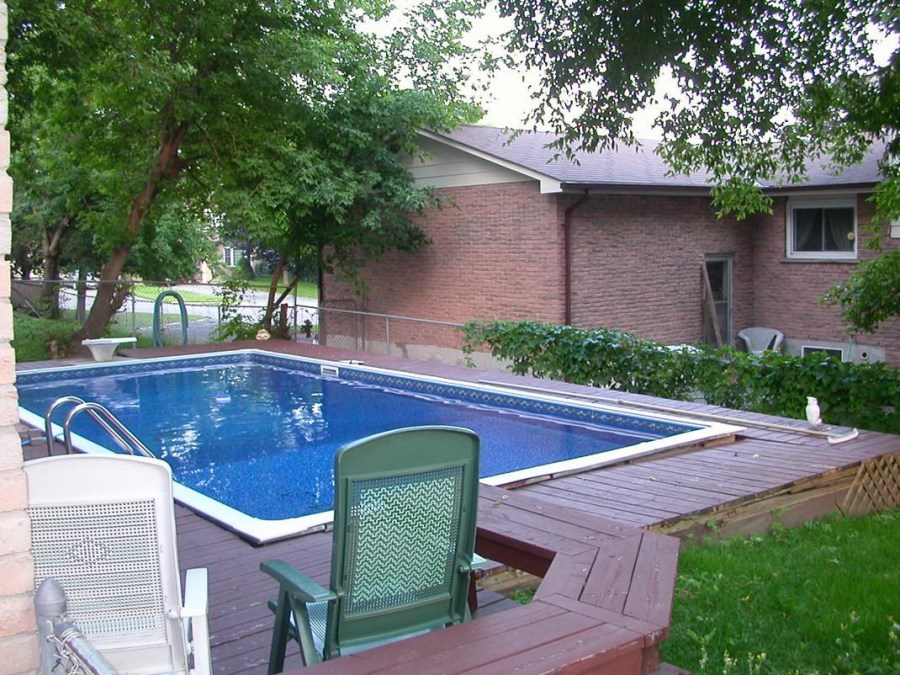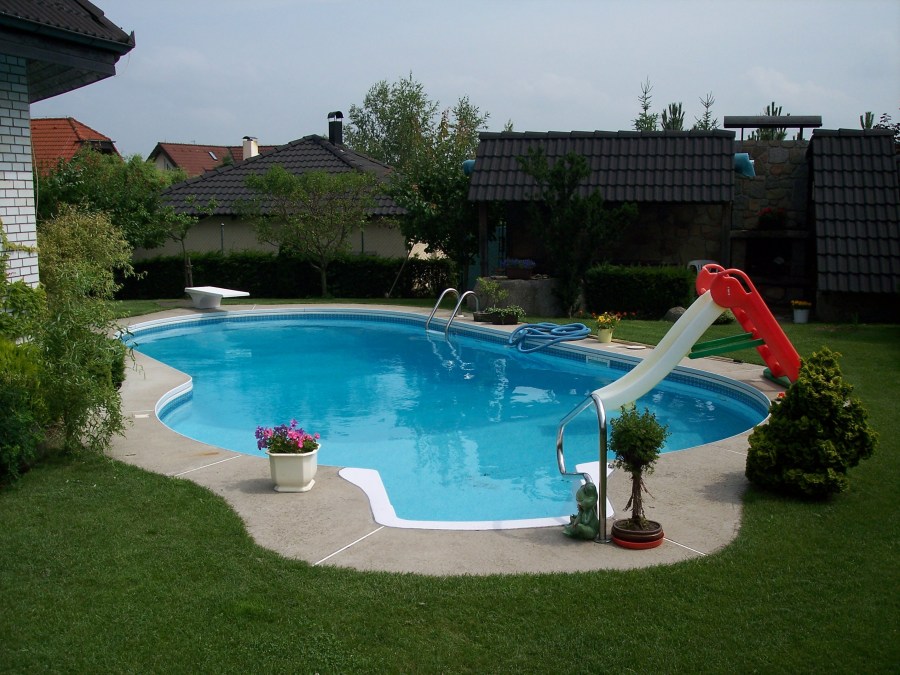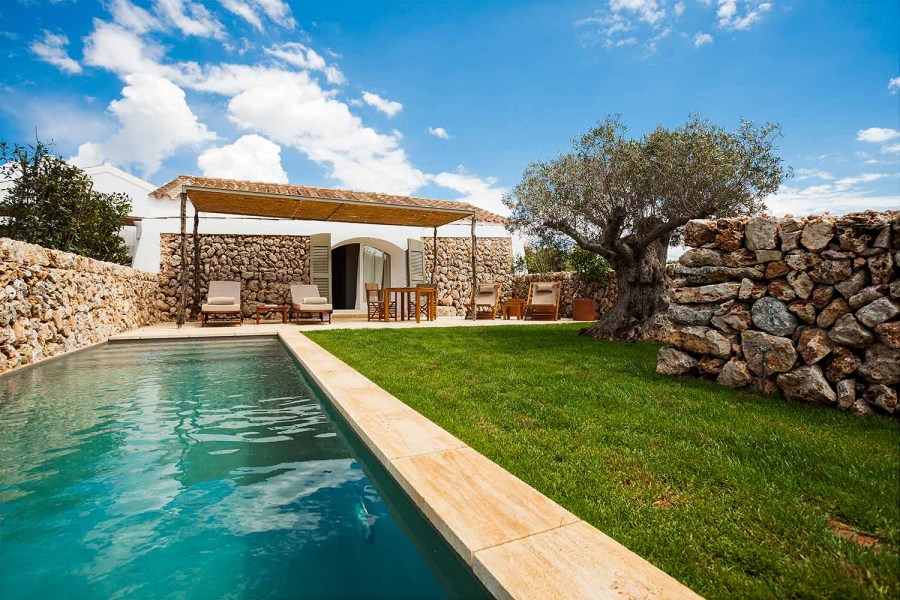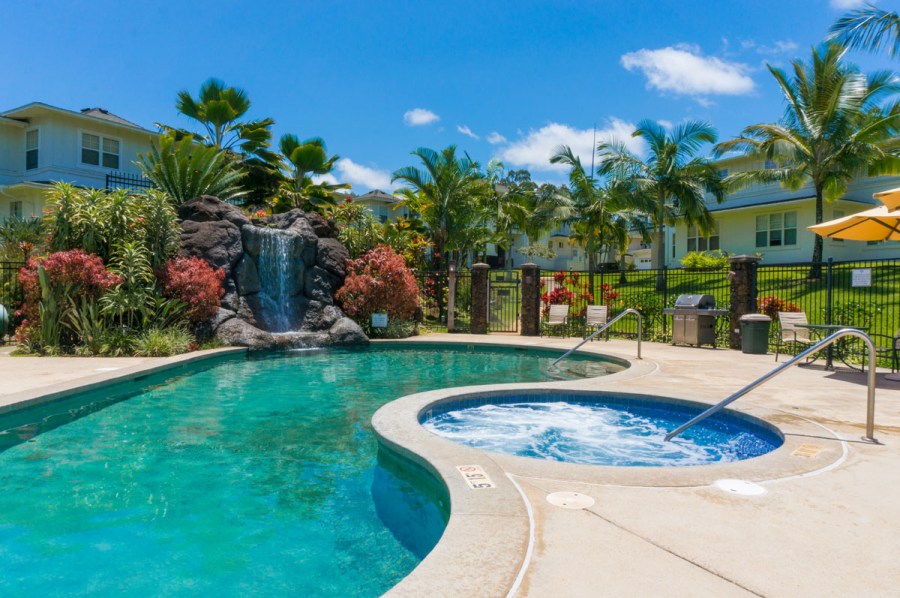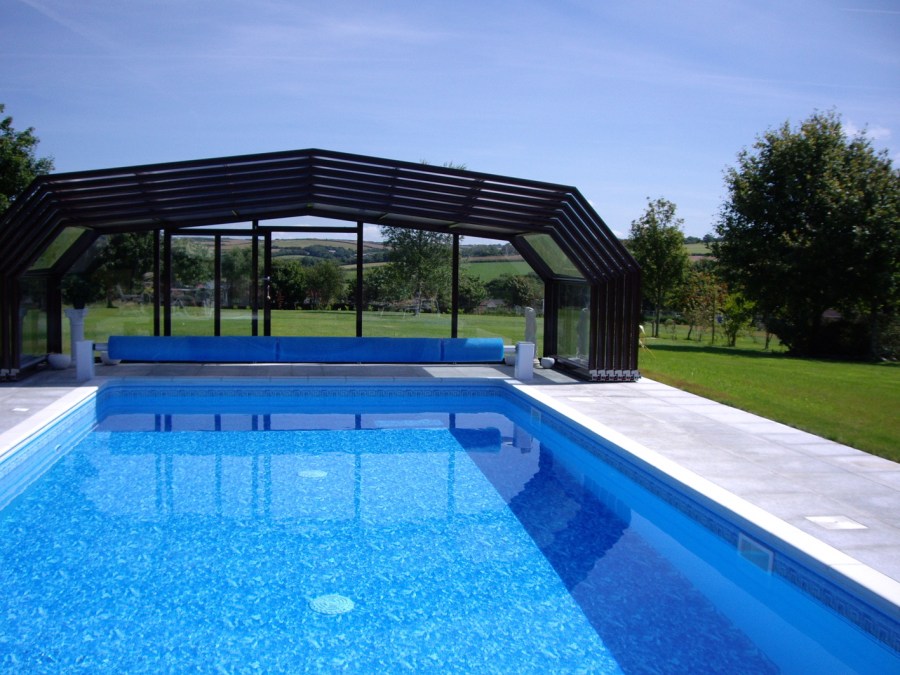Swimming pool on the site - construction, best ideas and basic design options (105 photos)
Everyone who has a private house, a summer cottage or a country cottage, at least once thought about the possibility of installing in the pool. Indeed, in the summer heat, both adults and young children are so pleased to plunge into clean, cool, fresh water.
Owners of country houses with a sufficient area, and people who are only planning the construction of a large cottage, can afford to install an indoor pool, a rest near which will be available year-round.
We’ll try to figure out how best to equip this type of entertainment, build a pool on the site, or simply install an inflatable structure, what materials to choose for this, how to care for it, and try to discuss all the nuances of choice.
Where to begin?
The arrangement of the pool at the summer cottage always begins with the choice of its type, volume, color, shape, location.
There are several types of pools, the most common are:
- inflatable;
- wireframe;
- concrete;
- plastic.
Inflatable pool
An inflatable structure is the most economical option, however, in terms of comfort and reliability, it differs little from more expensive varieties. Having selected and prepared the place where you would like to place the pool, you will need to inflate it with a special pump and then fill it with water of the desired temperature.
After use, using a special hole, the water is drained, the pool is washed from dust and packaged until the next use. This view is an ideal country swimming pool, upon arrival it is installed, when leaving home it is cleaned and easily transported.
The range of inflatable pools is quite wide, they differ not only in color and shape, but also in size: from small, for very tiny children, to large-sized structures, where all family members fit easily.
Frame pool
The frame pool is more reliable than an inflatable pool; it cannot be pierced or punctured. This design consists of a solid, waterproof base and strong, sturdy side rails. Such a structure is quite simple to install and install, resistant to temperature extremes.
If you want to install a concrete pool in a country house, then you will need to contact qualified craftsmen specializing in such work. Such a design will be much more expensive than the previous two.
Firstly, it will be necessary to create a drawing of the basin design, having studied the composition of the soil on which the installation is planned, accurately calculate the dimensions of the structure, the degree of inclination of the earth, etc. All these measures are carried out in order to prevent collapse of the pool walls.
Secondly, it will be necessary to dig a pit up to centimeters and then pour a concrete bowl, to allocate holes for drain and bulk pipes.
The main advantages of such a structure are the ability to use additional systems, for example, connecting a hydromassage, lighting under water, creating an artificial current, fountains, geysers, etc.
However, do not forget that it is not so easy to clean such a pool, and this procedure will have to be done quite often.
Plastic pool
The main advantages of plastic structures: ease of installation and installation, complete tightness and ease of operation. And the budget for the installation of this type will be much less than, for example, when pouring a concrete pool.
The main factors affecting the choice of one type or another will be:
- availability of cash;
- the size of the yard;
- direct location of the structure, etc.
With a limited budget, it is better to install an economical option, in the form of an inflatable or plastic pool. If both the facilities and the size of the territory allow, then you can start pouring the concrete structure with various additional functions.
Based on the location of the pool, we can say that to install it in a house or an extension, you need to use a stationary bowl, for arrangement in the air, both frame and all available views are perfect. The choice is yours.
Determine the installation location
The location of the future artificial reservoir plays a large role. When choosing a site for its equipment, pay attention to:
- the presence of green spaces in the territory;
- soil type;
- groundwater availability;
- soil slopes;
- the proximity of water pipes;
- wind direction prevailing in the territory;
- lack of buildings near the future pool, etc.
You can’t place a pool under or next to trees, falling leaves and branches will certainly pollute the water, it will have to be changed very often.
It is necessary to avoid the constant presence of the structure under the scorching sun, in case this is not possible, it is recommended to make a canopy over any part of the pool that can protect you from overheating in the sun.
The location in the immediate vicinity of the water supply will quickly and seamlessly fill the pool with water, greatly facilitating its cleaning.
How to fill the pool yourself
Installing an inflatable or frame version does not carry any difficulties, all the steps are phased out in the instructions for the goods, so I would like to pay more attention to the arrangement of the concrete pool.
Of course, you can order such a turnkey pool from professionals if you have enough free finance, but if there is a shortage of them, or if you have a fierce desire to do it yourself, carefully read the main stages of the upcoming work.
It all starts with the preparation of the site for the future design. A foundation pit is excavated in the ground, its depth and width should be 30 and 60 cm greater than the estimated basin volumes, respectively. Its walls are carefully compacted, the bottom is perfectly flat, the existing bumps are covered with sand.
After preparing the pit, the laying of thermal insulation begins. It can be produced with polystyrene foam, mineral wool and other raw materials similar in characteristics to the data.
Next, there is a laying of a five-centimeter layer of concrete, which will ensure the safety of the future structure. After creating a structure of reinforcement.
Upon completion of these actions, the main concreting of the pit begins, first its bottom and walls are poured 20 cm, then they are completely leveled using plywood formwork.
Do not forget about the water supply and drain pipes, during concrete pouring, they are mounted on the walls. After the concrete has hardened, the pipe responsible for the discharge is removed.
After hardening, the bottom and walls of the pool are tiled to give an aesthetic appearance, it is preferable to use the plate in dark colors, this will contribute to the rapid heating of water from the sun.
The installation of a concrete structure is quite laborious, for its creation you will need the services of an excavator, the help of third parties, it is very difficult to cope alone with such a large amount of work, so evaluate your strength and free time in advance.
A pool with clean, refreshing water on your site is a dream that is so easy to fulfill. Various types of them are presented on the market for every taste and budget. Therefore, do not be afraid of difficulties and decide to install it.
Photo of the pool on the site
Do-it-yourself chicken coop: 95 photos of construction and insulation options
Vertical flower beds: 90 photos of the main options for implementation in the garden
Bridges for a summer residence: 90 photos of the rules for decorating a decorative pond or stream
Pumping station for the home: 65 photo projects and options for their implementation
Join the discussion:


